Light at Mompesson House
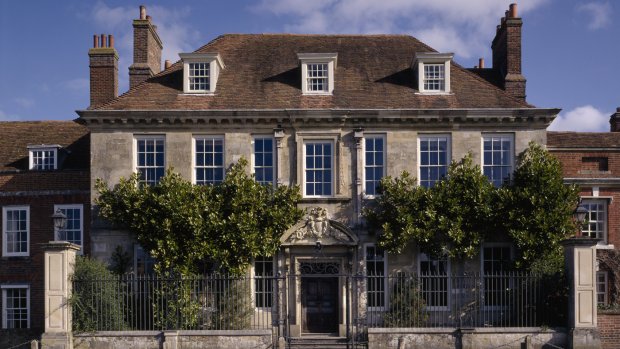 The daily opening of the shutters at Mompesson House in Salisbury floods the house with light - but how does this affect the collection? National Trust Consvervation Assistant Kate Vince looks at the different ways that light is monitored to protect the collection whilst still creating a wonderful experience for visitors.
The daily opening of the shutters at Mompesson House in Salisbury floods the house with light - but how does this affect the collection? National Trust Consvervation Assistant Kate Vince looks at the different ways that light is monitored to protect the collection whilst still creating a wonderful experience for visitors.
My first job in the morning is to open the shutters of the house. This lets the light flood the rooms and brings the house to life. I do a room at a time, clean it, then shut the shutters back down and plunge the house into darkness once more. This stops light from damaging the collection.
Light is an agent of deterioration and as such is monitored throughout the house. Viewing the collection in daylight is a joy but it has been well understood for centuries that light, particularly daylight, can cause objects to deteriorate. This damage is irreversible and cannot be rectified by conservation treatments.
We monitor different light sources such as UV and natural daylight and how they come into the house.
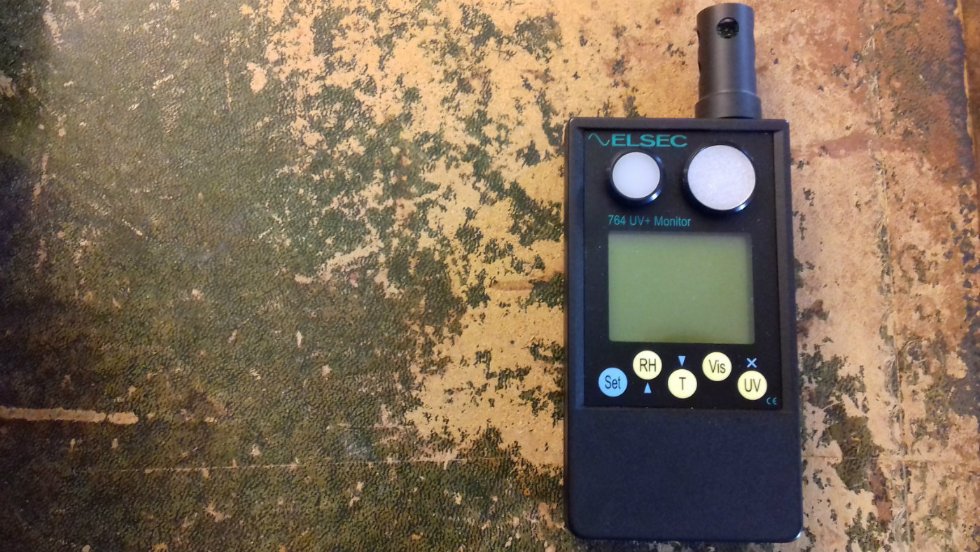 UV light
UV light
Ultraviolet (UV) light is extremely destructive. To combat this, the windows of the house have UV filters – thin polyester films on each pane of glass. This completely unobtrusive way of filtering UV means that we cut levels by around 98%. Each pane of glass is monitored every few months by using a hand-held environmental monitor called an Elsec as these films do deteriorate over many years. The Elsec monitor isn’t just used for UV, it also monitors visible light, humidity and temperature.
 Holland blinds
Holland blinds
These roller blinds are used during the day to change the light levels depending what the weather is doing. We have them on the south facing rooms at the front of the house. The north facing rooms don’t have any direct sunlight so blinds are not needed here. The aim is to not have any direct sunlight falling on any furniture or too much light coming into the room. I regularly take readings to measure the visible light with the blinds at different levels. Our room guides are very good at helping with this task by raising and lowering the blinds as appropriate. With our changeable weather some days it’s a full time job!
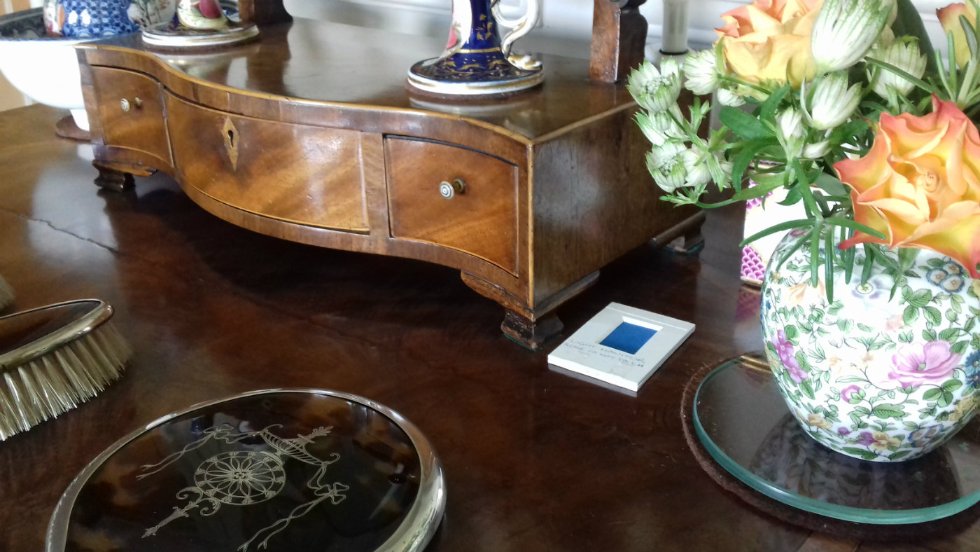 Dose or cumulative exposure
Dose or cumulative exposure
The dose of light is calculated by the amount of light the object is exposed to, multiplied by the duration in hours. This is monitored by a blue wool dosimeter. These monitor the annual light exposure and can be for a general room or put on individual pieces of the collection. You can spot these throughout the house. They are a very simple device and are based on a dyed piece of wool cloth and a little frame of cardboard. Some of the cloth is exposed to light and some is hidden under the frame of cardboard. After a year of being in the house the dosimeters are sent off and looked at by a conservator who monitors the degree of fading. This then tells us if the room or object has been exposed to the right amount of light over the year.
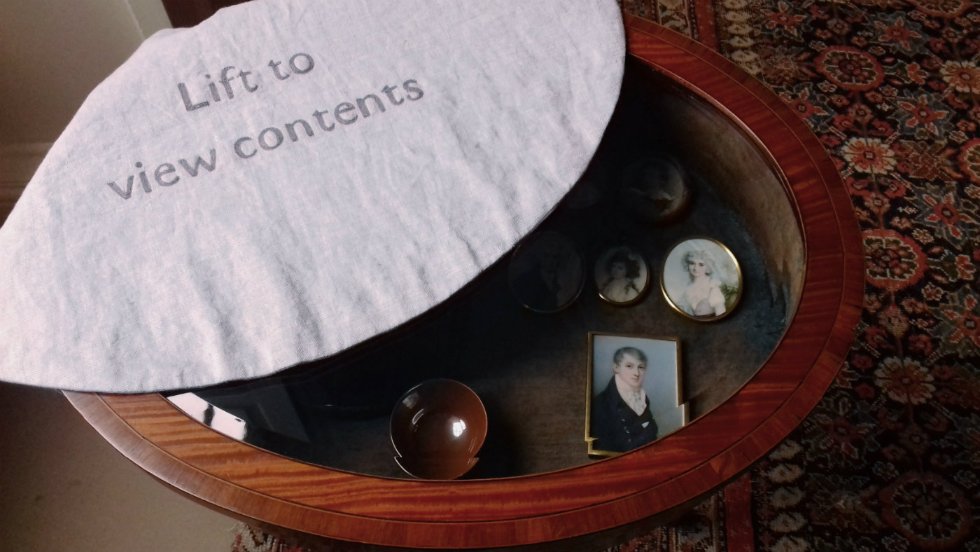 Covers
Covers
Covers are a good way of protecting objects when we are open. The vitrine in the large drawing room holds a few items such as miniature portraits. They are exquisite watercolours, but also very prone to deterioration under strong light. The cotton cover over the vitrine can be removed by visitors when they want to view the items while allowing these beautiful paintings to be kept safe at all times.
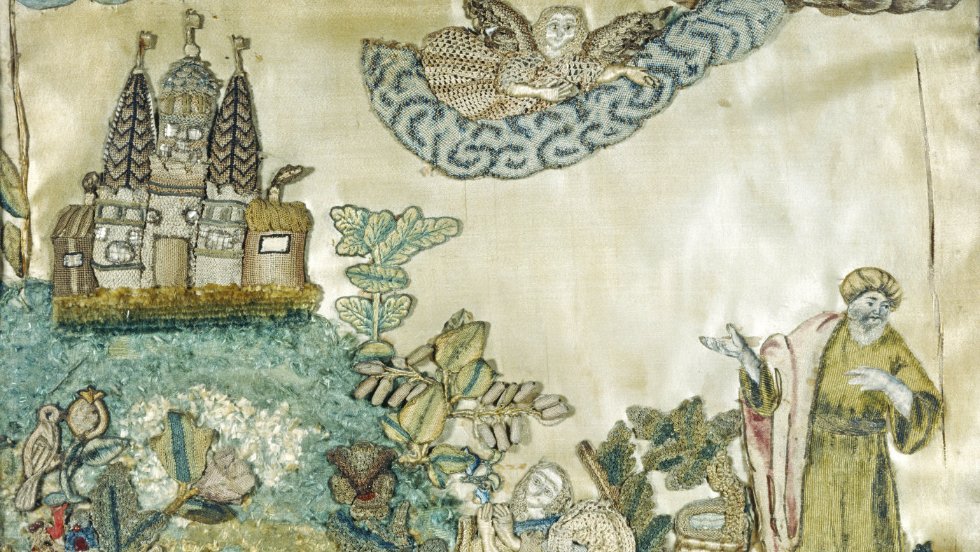 Light sensitive materials
Light sensitive materials
There are three levels of light exposure that the National Trust works to. One is for highly light sensitive material such as fabrics and watercolours. The second level is for moderately light sensitive materials such as paintings in oil, lacquered or japanned items. Finally there are materials that are insensitive to light such as metalwork, glass and stone. Here at the house we run to the moderately sensitive hours although we do have a couple of items that are highly sensitive and these are treated differently.
Some of the most light-sensitive pieces in our collection are our stumpwork embroideries. These have a dosimeter all to themselves. They are hung on a north facing wall so that no direct sunlight can fall on any part of them which keeps the UV levels down too and the room is kept completely dark for as long as we can.
Light is such an important part for viewing the collection here at Mompesson and we work hard to keep the collection safe while allowing visitors the enjoyment of seeing it in its best possible light.
To find out more about the Elsec instruments visit Littlemore Scientific.















